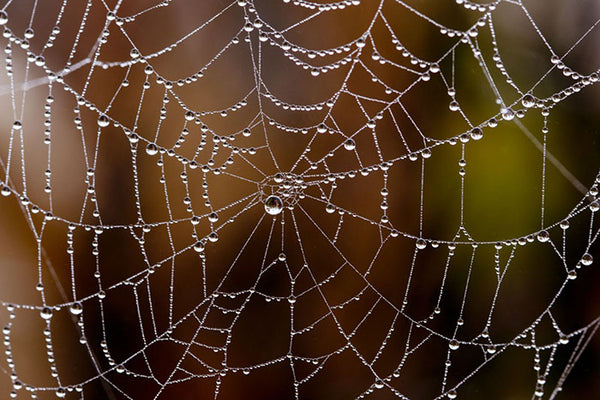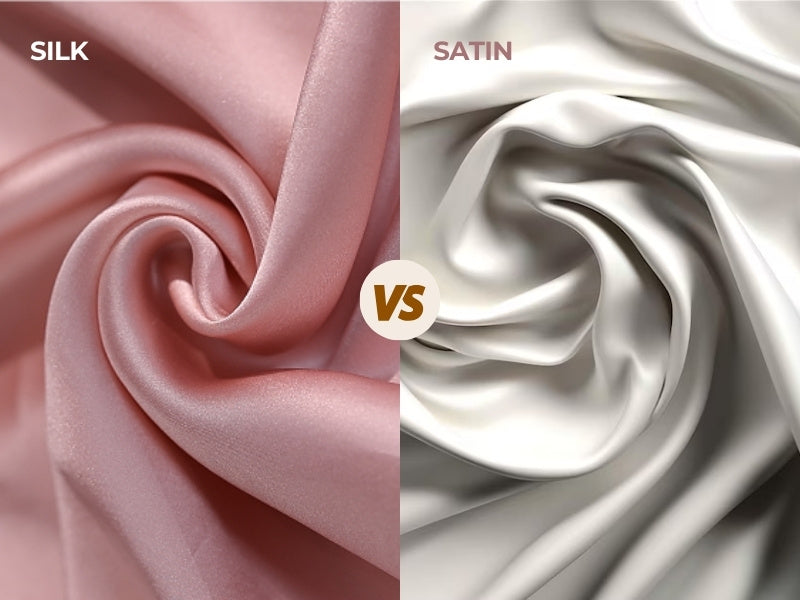Overview of Natural Protein Fibers
There are extremely rich biological macromolecules or natural macromolecules in nature. These materials are inexhaustible and inexhaustible resources given to humans by nature. Especially today, human beings are facing the crisis of the depletion of petroleum and other unsustainable resources. Natural polymers are receiving more and more attention due to their abundant sources and sustainability. Natural polymers mainly include cellulose, chitin and chitosan, starch, sodium alginate, silk protein, collagen, soy protein and natural rubber. Because these natural polymer materials have special biocompatibility and biodegradability, their use has long been not limited to daily life such as clothing, food, housing, and transportation. With the advancement of science and technology, more and more scientists are researching on natural polymers and their applications.
Among the many natural polymer materials in nature, the most direct reason why natural animal silk has received special attention is its excellent comprehensive mechanical properties. As a natural protein fiber, animal silk can be described as a special material created by nature through millions of years of adaptation and evolution of animals. It has the perfect balance of strength and toughness. Although there have been considerable developments in polymer science and material processing, especially spinning technology, the comprehensive mechanical properties of synthetic fibers currently prepared in the most optimized manner cannot surpass that of animal silk in nature.
There are about 113,000 species of Lepidoptera insects and 30,000 species of spiders in nature that can spin silk, of which silkworms and web-weaving spiders and their silk fibers are the most studied.
Mulberry silk is one of the first and largest natural polymer materials known to be used, and its protein is also the natural fibrin that has been studied most deeply by humans. Since mulberry silk has the advantages of special luster, good air permeability, strong moisture absorption, good hand feeling and high strength at the same time, it is known as the “queen of fiber” and has been used in the textile field. In addition, as a pure natural polymer material, silk protein has good mechanical properties, biocompatibility and relatively good environmental stability, and its application range has involved food, medicine, and biotechnology ( Such as silk protein-based enzyme immobilization technology) and daily fine chemicals (such as cosmetics) and other fields.
Compared with the widespread application of mulberry silk, although spiders lived on the earth 400 million years ago, the research and utilization of spider silk is far from as long as silk. This is because spiders are carnivorous animals, especially cannibalism; in addition, spiders do not spit out silk fibers at one time when they mature like silkworms, but secrete various silk proteins anytime and anywhere for daily needs, so it is very It is difficult to carry out large-scale artificial breeding like mulberry silkworms to form an industry; in addition, it is also difficult to collect a large amount of wild spider silk: therefore, the research and utilization of spider silk and its silk protein are greatly restricted.

Although spider silk has no real commercial application products so far, its extraordinary comprehensive mechanical properties have potential application prospects in high-performance materials. In particular, the spider’s large cystic gland (main gland) silk has become a kind of protein fiber material with great attraction due to its high strength and high elasticity, which has aroused great interest of materials scientists and biologists.
The natural evolutionary process of hundreds of millions of years has not only continued life species such as silkworms and spiders, but also created the toughness of animal silk. Humans have used animal silk to make clothing, musical instruments, and fishing gear for thousands of years. According to archaeological findings, in the middle of the Neolithic period five to six thousand years ago, Chinese ancestors began to raise silkworms, obtain silk and weave silk consciously or unconsciously. As a major silk producing country, China has created a new era of civilization of the Chinese nation’s silk clothing. At the same time, the changes of the times have endowed silk products with rich cultural connotations and historical values. Since ancient times, the economic and cultural exchanges between China and foreign countries that have arisen from the silk trade have had an indelible impact on the advancement of the entire human civilization. The well-known Western Han Silk Road at home and abroad not only promoted the friendly exchanges and cultural exchanges between China and the people of Asia, Europe and Africa, but also contributed to the economic prosperity at that time to a certain extent. Until the beginning of the 20th century, when synthetic fibers such as nylon yarns did not appear or were used on a large scale, silk was still used to make parachutes, tires and even body armor; while spider silk was due to its high strength, high tenacity, and fine uniformity. Distinctive features, often used as crosshairs for optical instruments, such as gun sights.
Today, scientists are still interested in animal silk and silk protein, mainly for the following reasons.
- As materials, animal silk and silk protein are gifts from nature and are produced sustainably. In today’s world where fossil resources such as oil, coal, and natural gas are becoming increasingly tense, the development and utilization of such renewable resources are particularly important. In order to survive and multiply, spiders and silkworms use various animals and plants as food for their daily energy needs. Under appropriate conditions, silk precursors, silk proteins, can be prepared in the body through biosynthetic methods. Silk protein can be used at room temperature. Under normal pressure aqueous environment, through the corresponding conformational transformation, it assembles into silk fibers with specific properties, and can be biologically (environmentally) degraded into completely harmless components as required. Besides, the silk fibers woven from animal silk is so elegant and comfortable.
- Animal silk is not only an all-protein material with biocompatibility and biodegradability, but also its excellent comprehensive mechanical properties (that is, the strength and strength created by the perfect balance of modulus, strength and elongation at break). It satisfies the public’s daydream about super power materials. A typical example is that when the magical spider silk provided inspiration to the artist, what came into being was the sensation caused by the “Spider-Man” series of movies, during which the protagonist’s ever-changing spider silk weapon was what we ordinary people dream of. of. However, judging from the fact that a spider silk with a diameter of about 2~6 µm can “suspend” a 1g spider, the spider silk that maintains Spider-Man does not need to be so thick. To put it vividly, it only needs to be like a pencil. Thick and thin spider silk can withstand the instantaneous power of a Boeing 747 large passenger plane when it takes off.
- Unlike other natural biological macromolecular materials such as cellulose, chitosan, soy protein, collagen and keratin, animal silk is the only protein fiber material that is continuously “spun out”. It was generally believed that the production conditions of high-performance natural fibers such as animal silk (that is, the spinning process under normal temperature, normal pressure, and aqueous solution environment) are very mild compared to almost all synthetic fiber preparation processes at present, which can be called natural Miracle. Therefore, in addition to focusing on the mechanical properties of animal silk, researchers are also constantly pursuing an in-depth understanding of the mechanism and process of animal silk protein fibrosis, trying to use bionic methods to make strong fibers under mild conditions, especially hoping to get Like natural spider silk, it is a protein fiber with both strength and high tenacity. It will carry out molecular design and optimization of spinning system and equipment for future high-performance synthetic fibers. But in fact, humans have encountered many difficulties in artificially producing high-performance spider silk fibers. They have to imitate the amino acid sequence and composition of silk protein, the structure and liquid crystal state of silk protein spinning dope, various spinning organs, and ” The overall process of “dry spinning” is not easy, after all, this is the expertise created by spiders and silkworms through hundreds of millions of years of natural selection.
- Based on the difficulties encountered in the biomimetic preparation of high-performance protein fibers, the research and application of animal silk is actively expanding from the traditional fiber field to the biomedical field. As a structural protein fiber with no physiological activity, silk was used in surgical sutures more than a century ago. Today, animal silk protein may become an ideal source of biomedical materials by virtue of its excellent biocompatibility, degradability, structural adjustability, environmental friendliness, abundant sources and low cost. Compared with other natural polymers such as chitin/chitosan, collagen/gelatin, soy protein, albumin, hyaluronic acid and sodium alginate, animal silk protein is not only large in quantity and easy to obtain, but also high in purity; Silk protein can realize the two-way conversion between the water-soluble Silk Ⅰ structure and the water-insoluble Silk Ⅱ structure, and its curing and molding methods are diverse. These characteristics are all conducive to adjusting the mechanical properties of regenerated silk protein materials through appropriate processing methods. The microscopic morphology and degradation rate provide convenience for its application in the biomedical field. Therefore, the current focus of exploration is how to use animal silk protein in such aspects as surgical sutures, medical dressings, biosensors, artificial cartilage and joints, artificial muscle bonds and ligaments, controlled release materials for drugs and genes, and scaffold materials for tissue engineering.
Therefore, the all-round basic research and application exploration of animal silk and silk protein is signalling a new material revolution, and it also shows that the process of human learning from nature and life will never end.
![[Light Blue] SilkSilky Pure Silk Notch Collar Women's Pajamas 001,](http://silksilky.com/cdn/shop/files/ab83afb9301666ee2f174a8ae72ffda4_4e9bb488-7880-40fe-9e69-f0fd823857c5.jpg?v=1764653199&width=1200)
![[Light Blue] SilkSilky Pure Silk Notch Collar Women's Pajamas 002,](http://silksilky.com/cdn/shop/files/db8dbeee5354fe3b631b963715847ffe.jpg?v=1764653202&width=1200)
![[White] SilkSilky Pure Silk V Neck Nightgown 001,](http://silksilky.com/cdn/shop/files/a8ae95260a57844b1e2e00c4fcfabdcc_b922b270-af10-4e96-9493-0d877bd663db.jpg?v=1764140639&width=1200)
![[White] SilkSilky Pure Silk V Neck Nightgown 002,](http://silksilky.com/cdn/shop/files/24ac506750f8c38c51bb5b6d0ee15287.jpg?v=1764140639&width=1200)
![[Champagne] SilkSilky 22Momme Pure Silk Pillowcase 001](http://silksilky.com/cdn/shop/files/e04cc9eba69859d7cb14b57cc93845bc.jpg?v=1759044759&width=1200)
![[Champagne] SilkSilky 22Momme Pure Silk Pillowcase 002](http://silksilky.com/cdn/shop/files/ab3dfabe2d7f619a89621d5d4836289d.jpg?v=1761901614&width=1200)
![[Steel Blue] SilkSilky Pure Silk Notch Collar Women's Pajamas 001,](http://silksilky.com/cdn/shop/files/05b358f92fb5d252122b00d69a2fcfc5_88211a42-88c4-4448-8cb3-5f18529bfef8.jpg?v=1762237226&width=1200)

![[Champagne] SilkSilky Pure Silk Round Neck Women's Pajamas 001,](http://silksilky.com/cdn/shop/files/4cd008b260b48a735910ef47a0ffcede_154de09c-492d-4405-a783-c5caa649ff51.jpg?v=1762322738&width=1200)
![[Champagne] SilkSilky Pure Silk Round Neck Women's Pajamas 002,](http://silksilky.com/cdn/shop/files/322ae8e3d97b01938181e0aae5a68459.jpg?v=1762322738&width=1200)







